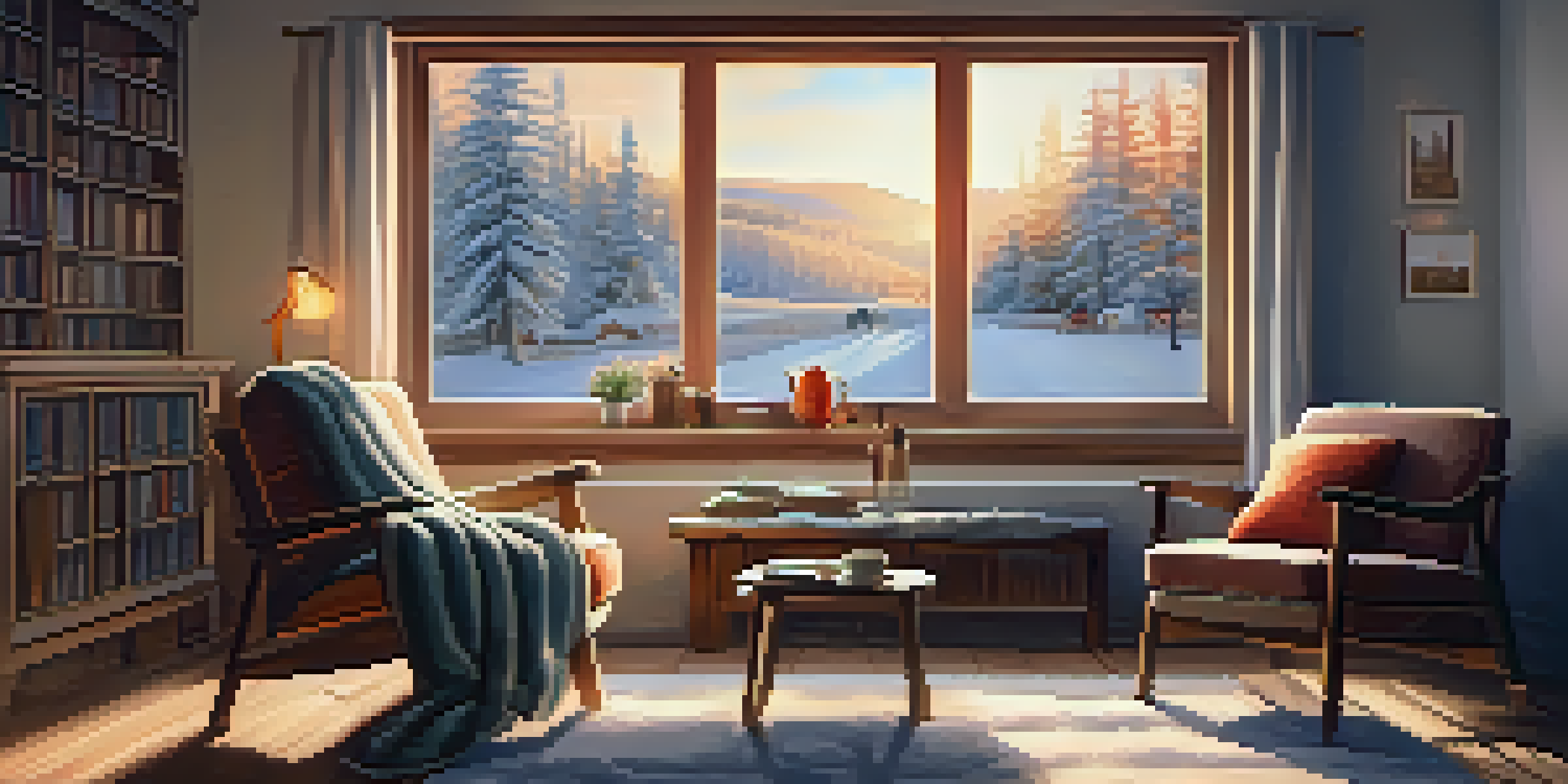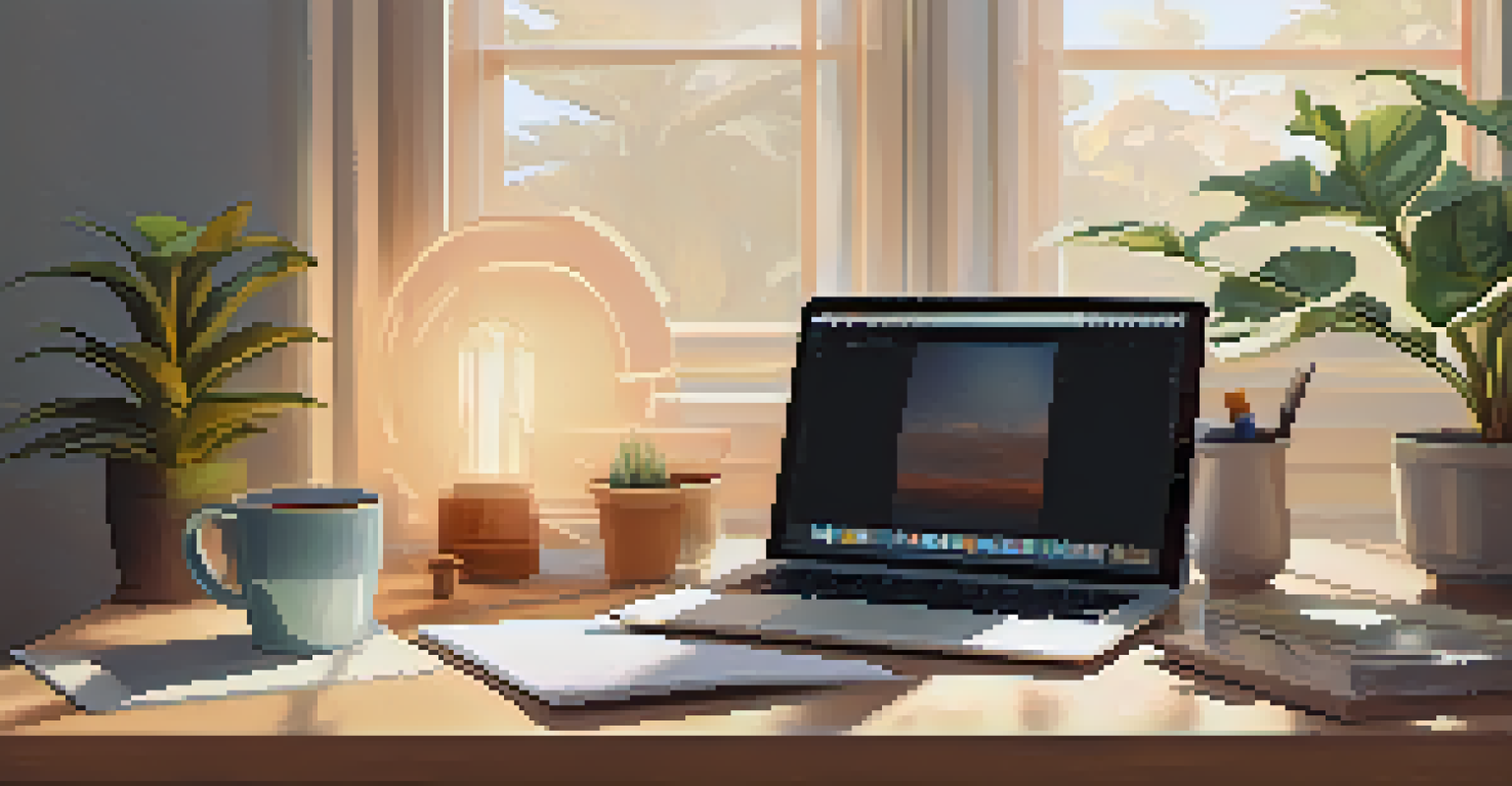Light Therapy: A Naturopathic Solution for Seasonal Affective Disorder

Understanding Seasonal Affective Disorder (SAD)
Seasonal Affective Disorder, commonly known as SAD, is a type of depression that occurs at specific times of the year, typically in the fall and winter when daylight hours are shorter. Many people experience feelings of sadness, fatigue, and even changes in sleep patterns during these darker months. It's not just a case of the 'winter blues'—SAD is a recognized mental health condition that can significantly impact daily life.
The greatest weapon against stress is our ability to choose one thought over another.
The exact cause of SAD isn't fully understood, but it's believed to be linked to changes in sunlight exposure. When the days get shorter, the body's internal clock, or circadian rhythm, can be thrown off, leading to imbalances in mood-regulating chemicals like serotonin. This can create a cycle of low energy and feelings of hopelessness that many find hard to break.
Fortunately, there are various treatment options available, one of the most effective being light therapy. This natural approach mimics sunlight exposure, helping to reset the body's internal clock and boost mood, making it a compelling option for those suffering from SAD.
What is Light Therapy?
Light therapy, also known as phototherapy, involves exposure to a specific type of light that mimics natural sunlight. This is typically done using a specially designed light box that emits bright light, usually around 10,000 lux, which is significantly brighter than standard indoor lighting. The goal is to provide the body with the light it craves during those darker months.

The treatment usually requires about 20 to 30 minutes of daily exposure, ideally in the morning, to effectively signal to the brain that it's daytime. Many people find this routine not only easy to incorporate into their mornings but also beneficial in lifting their spirits. It's like soaking up the sun without having to head outdoors on a cold winter day.
SAD affects mood in winter months
Seasonal Affective Disorder (SAD) is a form of depression that typically occurs in fall and winter due to reduced sunlight.
Light therapy doesn't just help with mood; it can also improve sleep quality and overall energy levels. By mimicking natural sunlight, it helps regulate melatonin production, the hormone responsible for sleep, ultimately helping individuals feel more awake and alert during the day.
How Does Light Therapy Work?
The science behind light therapy is quite fascinating. When light hits the retina in our eyes, it sends signals to the brain's hypothalamus, which plays a crucial role in regulating our circadian rhythms and mood. By providing bright light exposure, light therapy can help boost serotonin levels and decrease melatonin production during the daytime, helping to alleviate symptoms of SAD.
Keep your face always toward the sunshine—and shadows will fall behind you.
Moreover, light therapy can also influence other hormones and neurotransmitters in the brain that are linked to mood, such as dopamine and norepinephrine. This multifaceted approach makes it a powerful tool for combating the effects of SAD, providing a natural way to lift spirits during the darker months of the year.
Many users report feeling improvements within just a few days of starting light therapy, making it a quick and accessible solution. However, it's essential to maintain consistency and follow the recommended guidelines to achieve the best results.
Benefits of Light Therapy for SAD
One of the most significant benefits of light therapy is its ability to provide relief without the side effects commonly associated with medication. Many individuals prefer this natural approach, especially those looking to avoid pharmacological treatments. It's a straightforward method that can easily fit into daily routines, making it an appealing option for many.
In addition to alleviating symptoms of depression, light therapy can help improve sleep patterns and enhance overall energy levels. Users often report feeling more motivated and engaged in their daily activities, which is particularly vital during the winter months when lethargy can set in.
Light therapy aids SAD treatment
Light therapy mimics sunlight to help regulate mood and circadian rhythms, making it an effective treatment for SAD.
Furthermore, light therapy is safe for most people, with minimal side effects. Some may experience mild headaches or eye strain, but these are usually temporary and can be mitigated by adjusting the distance from the light source or reducing exposure time.
Choosing the Right Light Box
When it comes to light therapy, not all light boxes are created equal. It's crucial to choose a device that emits the appropriate brightness (10,000 lux is the standard) and has a UV filter to protect your skin and eyes. Look for devices that are specifically designed for treating SAD, as these will provide the most effective light spectrum.
Consider the size and design of the light box as well. Some are compact and portable, making it easy to use at home or even at the office. Others may be larger and designed to be placed on a desk or table. Choose one that fits seamlessly into your lifestyle to ensure you stick with the treatment.
Lastly, check for certifications and reviews. A reputable light box will have undergone testing and will have positive feedback from users. By investing in a quality device, you increase your chances of experiencing the beneficial effects of light therapy.
Integrating Light Therapy into Your Routine
Incorporating light therapy into your daily routine doesn't have to be a chore. Many people find it helpful to schedule their light therapy session in the morning while they enjoy their coffee, read the news, or check emails. This not only makes the experience enjoyable but also ensures consistency, which is key to reaping the benefits.
You might also consider setting reminders on your phone or using a planner to track your sessions. Keeping a log of your mood and energy levels can also help you see progress over time, which can be motivating. Remember, consistency is vital for the best results, so find a rhythm that works for you.
Consult professionals for guidance
It's important to consult a healthcare professional before starting light therapy to ensure appropriate treatment for SAD.
Additionally, complementing light therapy with other practices like regular exercise, a balanced diet, and mindfulness can enhance its effectiveness. The combination of these healthy habits can create a holistic approach to managing SAD, promoting overall well-being during the challenging winter months.
Consulting a Professional for SAD Treatment
While light therapy can be a fantastic solution for many individuals suffering from SAD, it's always wise to consult with a healthcare professional before starting any new treatment. They can help determine if light therapy is right for you based on your specific symptoms and medical history. Additionally, they can guide you on usage and help you find the best light box for your needs.
A professional can also help rule out other conditions that might be contributing to your feelings of sadness or fatigue. Sometimes, SAD can coexist with other mental health issues, and a comprehensive treatment plan may be necessary. This ensures you are not only tackling the symptoms of SAD but also addressing any other underlying concerns.

Ultimately, seeking professional advice can provide peace of mind and set you on the path to recovery. With the right support and tools, you can navigate the challenges of SAD and enjoy a brighter outlook during the darker months.